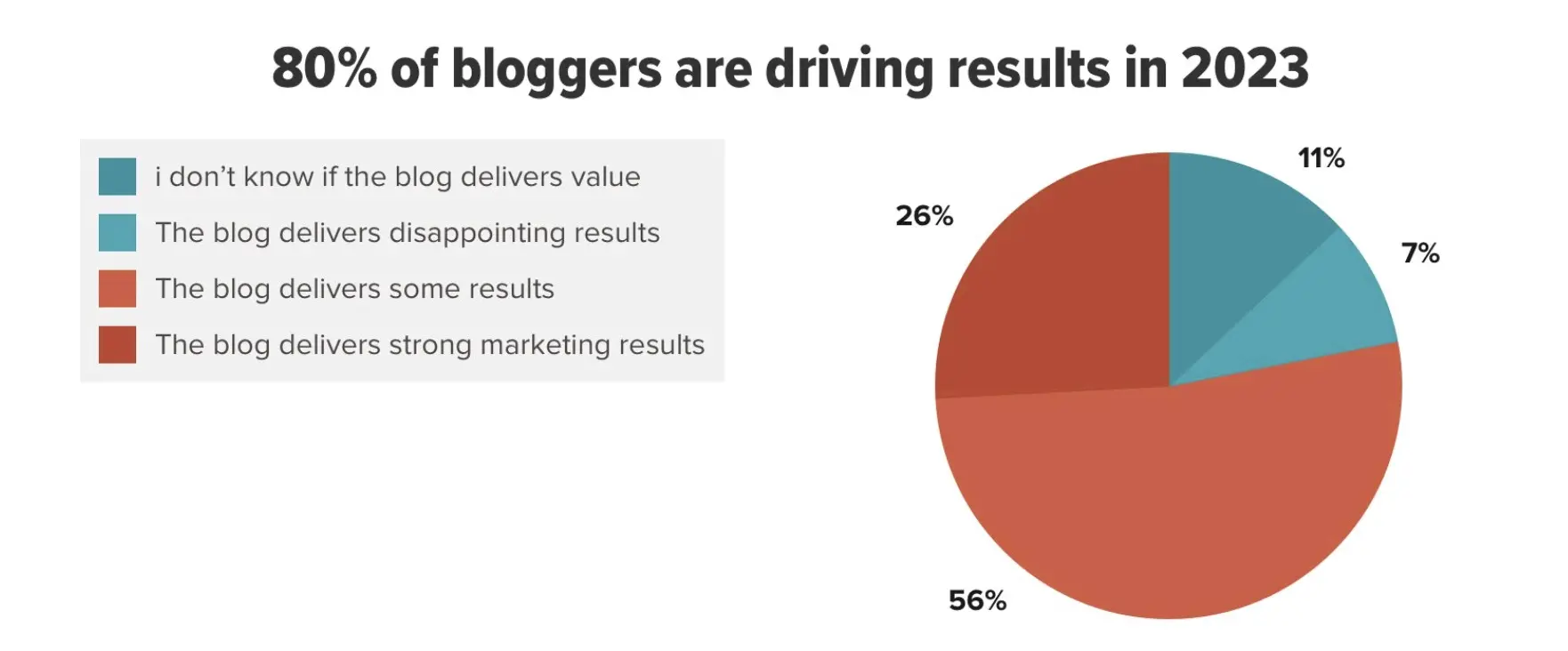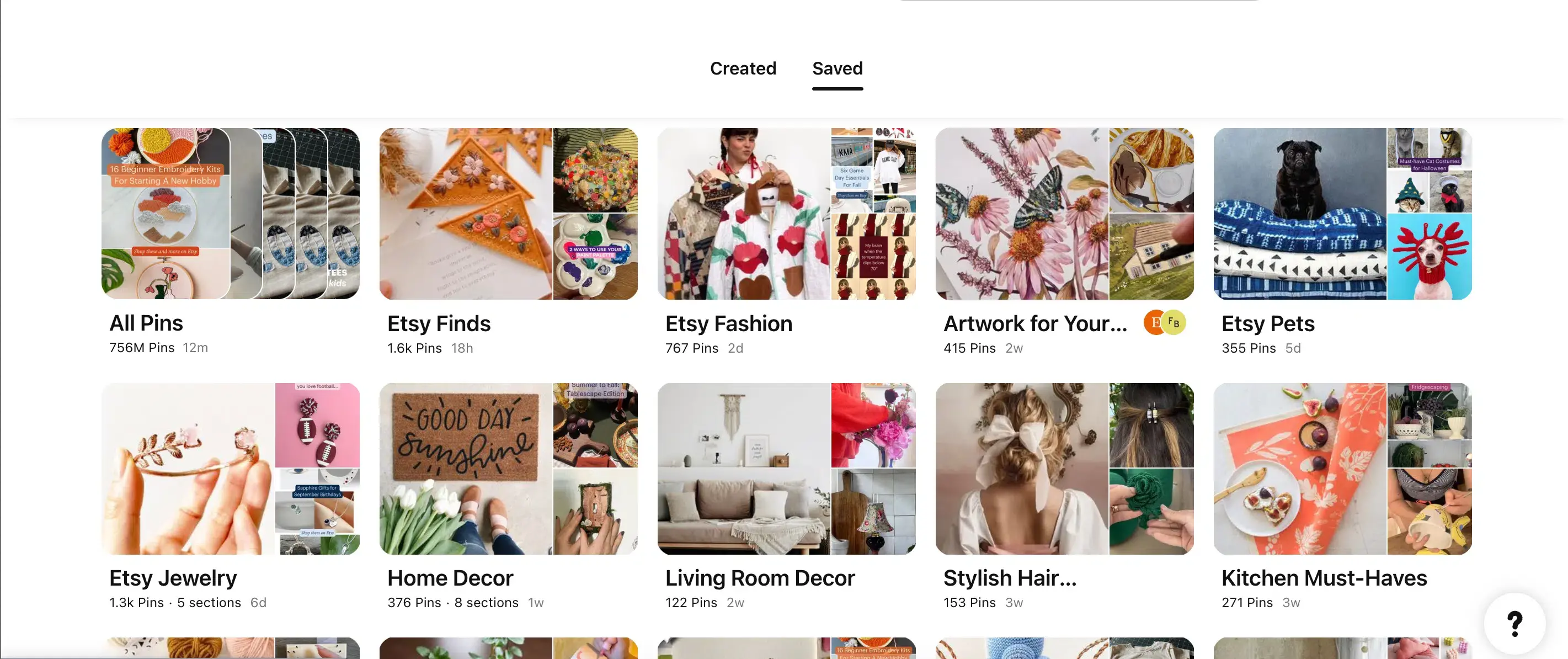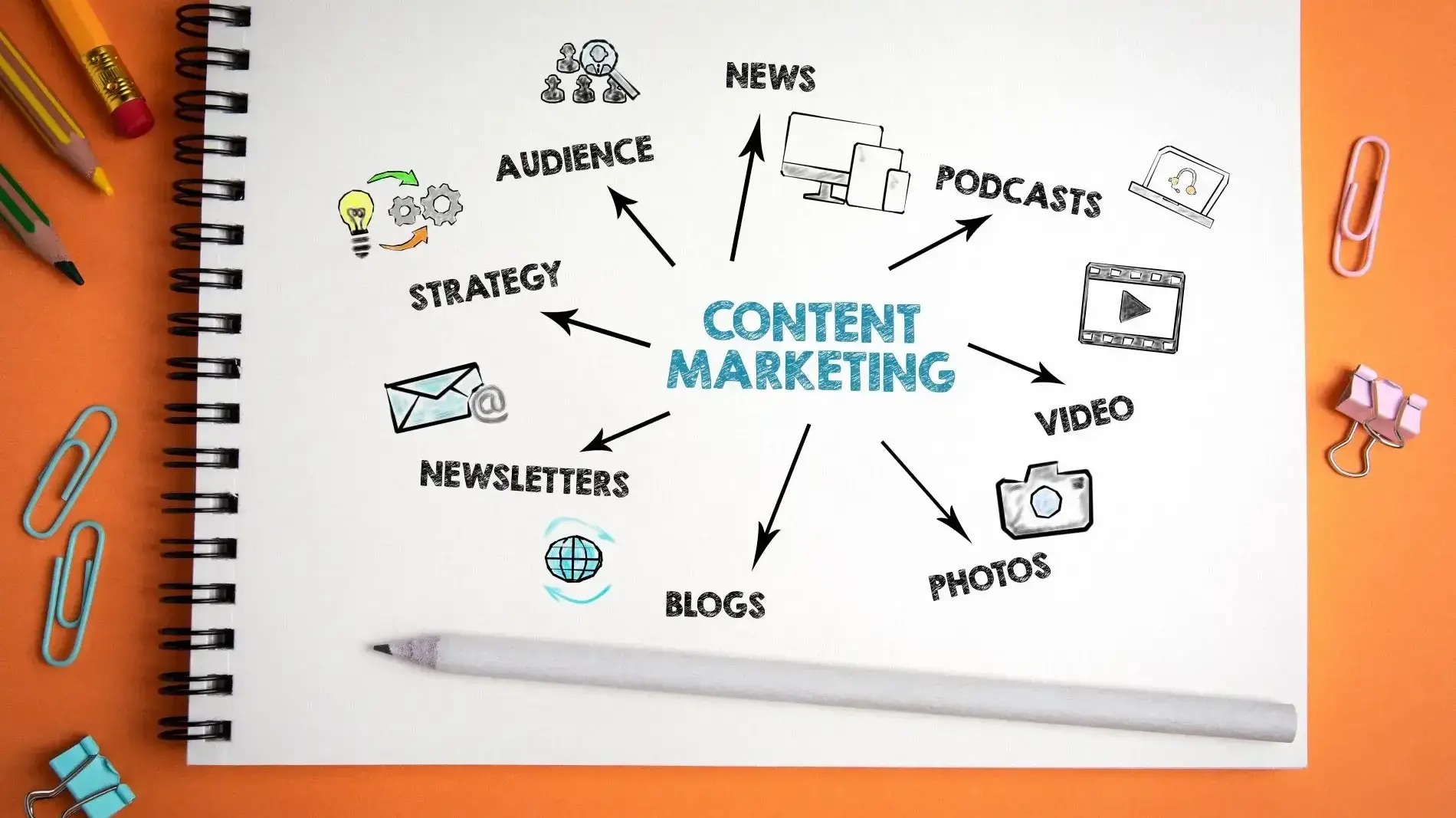Having been through the annoyance of putting together an eCommerce behind the scenes, I can fully relate to your feeling of relief after officially launching. However, you risk wasting your efforts unless you know how to reach your target audience. Ads are one option, but they’re also quite expensive, and you might not have the budget in your early days.
In my opinion, content marketing is the single most effective way to build a successful long-term eCommerce brand. Besides helping brands generate hundreds of thousands of dollars in revenue, content marketing has also helped me promote the products and services I sell better than anything else. While the early days are strenuous, it’s a path that’ll reward you if:
- You stick with it for the long run.
- You’re willing to experiment and learn.
With so many options, though, knowing where to place your eCommerce content marketing efforts (and creating a strategy) can be daunting. Based on my 10+ years of experience as an in-house marketer, a freelance writer, and a creative entrepreneur (and as someone who’s pretty much tried every platform), I’ll help clarify everything you need to know today. Keep reading to learn about:
- Different content marketing channels.
- Where you should focus your efforts.
- How to create a better strategy.
Why Your eCommerce Brand Should Focus on Content Marketing
You probably got into eCommerce to help people with your product, and I’d also assume that you have little interest in sending cold calls, emails, and DMs. As we’ve already discussed, advertising can be quite pricey if you don’t have a big budget.
This is where content marketing comes into the picture.
According to a 2021 Relevance article, content marketing can—when done correctly—lead to a 3x increase in leads. Even better, it’s 62% more cost-effective than outbound marketing.
But why is good content marketing so effective for lead generation?
It comes down to several factors, but trust is a huge one. PwC found that 91% of buyers would purchase from a company they trust, and content marketing can help by demonstrating expertise.
Content marketing is also powerful because it makes you more memorable. The 7-11-4 rule is one of my favorite marketing theories, and I believe it’s one of the reasons I get more high-quality leads these days. The general idea is that the following is necessary for customers to make a purchase:
- 7 hours of engagement
- 11 touchpoints
- 4 separate locations
If you post high-quality content over the long run, you’ll inevitably get in people's faces more. Once they recognize and like you, they’re more likely to become a customer.
Content Marketing for eCommerce: Channels and Methods
Having tried most forms of eCommerce content marketing, I can at least outline each channels and their pros/cons. You’ll find all of that information below.
Blogging
People have told me since I started blogging that this medium is dead (spoiler alert: it isn’t). It has certainly evolved, but even if you start now, you can see significant success if you play the long game. According to 2023 research by Orbit Media, over 80% of bloggers were delivering “some” or “significant” results—with the majority falling into the “significant” category.

Source: Orbit Media
Blogging can take several forms, and it’ll depend largely on your audience. If you sell clothes, you could use your blog to tell stories from brand ambassadors. For example, 66 North—one of my favorite outdoor clothing brands—sells products designed for durability in Iceland’s harsh climate. On their website, you’ll find collaborations with those who know the country best (like the music group KALEO).
North KALEO Journal

Many companies use their blogs to provide useful information that will a) generate leads and b) enable users to get the most out of their products. If you sell photography prints, you could write blog posts showing users how to choose the right print size for their walls. And if your pictures focus on a specific region or niche, you could write related guides. For example, I sell Scandinavian wall art and write in-depth Scandinavian travel guides with original photos.

It’ll take you at least 3-6 months to see results from blogging, and while search engine optimization (SEO) is important, I recommend diversifying your traffic. You can use some of the other channels I’ll discuss shortly, but my favorite search engine alternative is Pinterest. After launching your website, make sure that you’ve submitted your sitemap to Google Search Console; it took me six months to realize that I hadn’t done this upon starting.
You should also choose a server that allows your blog and website to run quicker, and much of this will come down to your hosting plan.
Pros
Cons
Email Marketing
When done correctly, email marketing can be highly effective. I was told to build a mailing list as soon as I started an online business, and while it’s still small, I’m glad I did. Mailing lists let your audience interact with you on their terms, and you benefit from owning your audience. While blogs and social media platforms are prone to algorithmic changes, that isn’t the case with email marketing.
You’ll have to experiment and see how often you should send emails. I send a quarterly newsletter—but other businesses send monthly or weekly emails. While conventional advice tells you to create sequence emails when someone joins, you must be careful as these are often annoying. Things you can share in your emails include:
- Discounts and promotions
- Sharing useful tips on using your product
- Sharing stories from customers and brand ambassadors
- Keeping users updated with blog posts they might have missed
Promote your newsletter in pop-ups, calls to action, and on social media. If you don’t know where to start, check out these eCommerce email marketing examples that convert.
Pros
Podcasts
Podcasts are an unconventional eCommerce content marketing method, but they can work well if you have the right products. For example, if you’re a mother selling clothes for babies, you could start a podcast helping other mothers with the challenges of parenthood. Similarly, a haircare product could start a podcast about maintaining healthy hair.
You can distribute your podcast on Spotify, Apple Podcasts, and even YouTube. You can speak as one person or with a co-host; alternatively, find guests related to your product’s niche.
Pros
Cons
Social Media
It’s hard to group social media because each platform has different audiences, but I’m mainly speaking about:
- TikTok
- X (Twitter)
Visual products (e.g., eCommerce brands in the art space) should consider gravitating toward Instagram. It has become much harder to grow an audience, but it’s great for branding. Pinterest, meanwhile, is handy for promoting your products because people mainly use the platform to search for inspiration.

TikTok can work well for brands with younger audiences. LinkedIn is ideal for B2B products, and Facebook can work if you use groups (I think business pages are somewhat useless now, though). Rather than being mediocre at all of them, I suggest picking one or two and learning how they work. Consider where your audience hangs out and think of ways to appeal to them.
Avoid getting trapped into vanity metrics, too; one podcast I like is called “Likes Ain’t Cash”, and I tell myself that regularly. I also made my first sale with 17 Instagram followers on my most recent business; make of that what you will. Don’t forget to read this guide on how to create an eCommerce social media strategy before starting.
Pros
Cons
YouTube
YouTube has over 2 billion monthly active users, making it a fantastic place to promote your eCommerce brand. You can use the platform to inform, entertain, or inspire, and you can also embed your YouTube videos in WordPress.
One brand’s YouTube channel I really like is LEGO, which has interactive content ranging from quizzes to workshops and more. Rather than focusing on subscribers or ad revenue, you should use YouTube to appeal to a niche audience. Who cares if you only have 100 subscribers if each pays you $100?
Pros
Cons
Like blogging, YouTube is a long-term game. Start with your smartphone if you can’t yet afford a camera; most modern devices have excellent video quality. Learning about thumbnails is also essential if you wish to grow, and understanding how to manage YouTuber burnout is also wise.
Avoid These Common eCommerce Marketing Mistakes to Increase Your Chances of Success…
Focusing on Quantity Over Quality
You’re much less likely to be relevant or credible if you constantly post low-quality content. There’s a reason why 82% of marketers would rather focus on the highest-quality content, even if they can’t post as frequently.
While there is a minimum level needed to gain traction, one excellent long-form post per month is better than four forgettable pieces of content. Start slow and build once you become more confident.
A Short-Term Mindset
You’ll probably get little to no traffic in your early days, but the most frustrating periods are when you need patience. Building any successful business takes years, and you should act like you already have 100,000 followers and generate 6+ figures in profits. I truly believe that quality always rises to the top, and if you’re willing to learn while remaining consistent, your efforts will pay off (and you’ll have a more sustainable business when they do).
Doing the Same Thing as Everything Else
eCommerce content marketing is fiercely competitive, and you must find a way to stand out. The worst way to do that, in my opinion, is by doing the same thing as everyone else. Doing so will also lock you into shiny object syndrome.
Look at others for inspiration, but add a unique spin. You can use a character to tell your stories, for example. This will require learning and experimentation; the best way to find out is by trying lots of different things.
Some More Important Questions to Ask Yourself
How Often Can I Reasonably Post?
Be honest with how much you can post high-quality content. If you’re full-time on your business and have significant financial backing, you can probably post more than someone in a full-time job. Regardless of what you choose, stick to it. I recommend creating a content calendar; Google Sheets, Notion, or Microsoft Excel is good enough for this.
Do I Need to Hire Someone?
While you can learn about content marketing on your chosen channel(s), you may find hiring people with experience in this area more beneficial. Doing so will allow you to focus more on developing your products. Consider outsourcing your blog posts to freelancers, for example, or hiring a video content creator for YouTube. You may also want to hire a social media manager or email copywriter. This isn’t obligatory, but it might help you scale.
Summary
Content marketing is the most exciting part of running an eCommerce business, in my opinion, and you’ve got plenty of potential avenues. If you’re willing to stick with it for the long run, you can build a dedicated audience that not only loves your products but is also loyal to your brand. Start with a few channels at most, and get to learn their ins and outs. This, along with focusing on quality and long-term thinking, will help you stand out and grow a sustainable business.
Frequently Asked Questions
What is the role of content marketing in creating successful email campaigns?
Content marketing plays a crucial role in email marketing by providing valuable, relevant content to subscribers, and enhancing the effectiveness of email campaigns. Good content marketing can lead to higher engagement and conversion rates by offering targeted content that addresses the specific interests and needs of an audience.
How do I manage and update localized content efficiently?
Efficiently manage and update localized content by selecting a multilingual Content Management System (CMS) and establishing language consistency guides like glossaries and style guides. Adopt agile methodologies for responsive updates, and ensure continuous monitoring and content adjustments based on user feedback and market trends.
How do businesses ensure authenticity in User-Generated Content?
Authenticity in UGC is maintained by allowing users to share genuine experiences and opinions. Businesses should avoid heavy-handed editing, filtering, or scripting, ensuring that the content reflects the unfiltered voice of the community.
Can User-Generated Content be measured for its impact?
Yes, businesses can measure the impact of UGC through various metrics such as engagement rates, reach, sentiment analysis, and conversion rates. Monitoring these metrics provides insights into the effectiveness of UGC strategies.

Danny is a seasoned freelance copywriter with 10+ years of managing his own websites in WordPress and other content management systems. He's an expert in eCommerce and sells his own photography prints, in addition to knowing about hosting domains having used several providers. Danny's strong writing expertise is evident in his bylines across several major tech publications, including Lifewire, MUO, and Make Tech Easier.
View all posts by Danny Maiorca





















